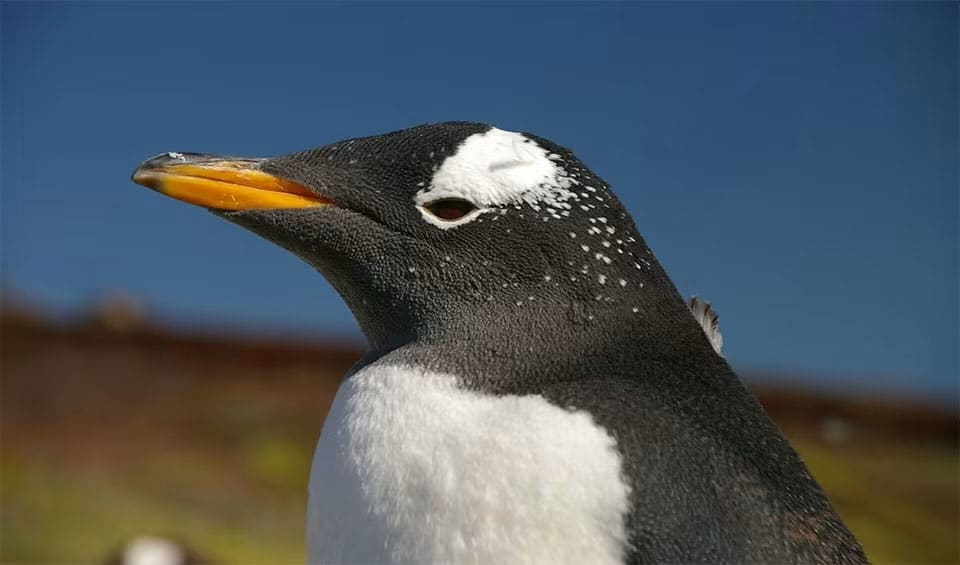Recognized for their unique physical characteristics and dynamic behavior, Gentoos are a species that capture the fascination of scientists and wildlife enthusiasts alike.
Sporting the classic penguin “tuxedo” look, Gentoos have a bright white patch extending like a bonnet across the top of their heads, making them one of the most easily identified penguins. Their red-orange beaks and peach-colored feet add to their distinct appearance. This coloration not only makes them visually striking but also plays a role in mate selection and species recognition.
Gentoo Penguins are known for their preference for ice-free zones along the shorelines of sub-Antarctic islands, where they establish their colonies. These areas provide the necessary access to the sea for foraging and the pebbly beaches they favor for nesting. They build circular nests from stones, and both parents share incubation duties and chick rearing, reflecting a highly cooperative breeding strategy.
One of the most extraordinary abilities of the Gentoo Penguin is its adeptness in the water. They are exceptional divers, capable of diving up to 200 meters (about 650 feet) in search of prey, which includes fish, krill, and squid. With the potential to dive as many as 450 times per day, their hunting skills are crucial for sustaining their energy-intensive lifestyle. Moreover, Gentoos are the fastest-swimming penguins, reaching speeds of up to 36 km/h (22.4 mph), a trait that helps them evade predators and catch swift-moving prey.
Distribution
 Atlantic ocean
Atlantic ocean Indian ocean
Indian ocean Pacific ocean
Pacific ocean Antarctica
Antarctica Argentina
Argentina Australia
Australia Bouvet Island
Bouvet Island Chile
Chile Falkland Islands
Falkland Islands French Southern T.
French Southern T. Heard & McDonald
Heard & McDonald New Zealand
New Zealand Saint Helena
Saint Helena South Africa
South Africa South Georgia
South GeorgiaAnything we've missed?
Help us improve this page by suggesting edits. Glory never dies!
Suggest an editGet to know me
Terrestrial / Aquatic
Altricial / Precocial
Polygamous / Monogamous
Dimorphic (size) / Monomorphic
Active: Diurnal / Nocturnal
Social behavior: Solitary / Pack / Herd / Colony
Diet: Carnivore / Herbivore / Omnivore / Piscivorous / Insectivore
Migratory: Yes / No
Domesticated: Yes / No
Dangerous: Yes / No





